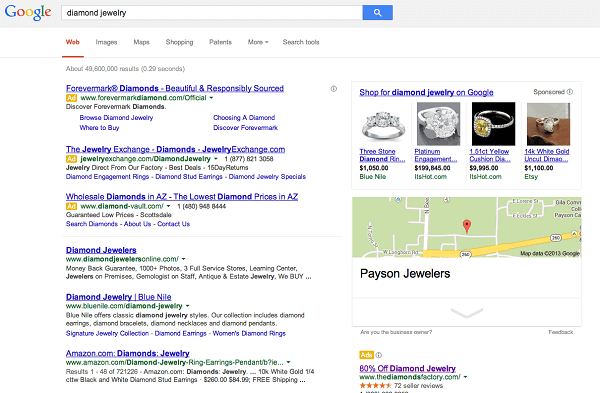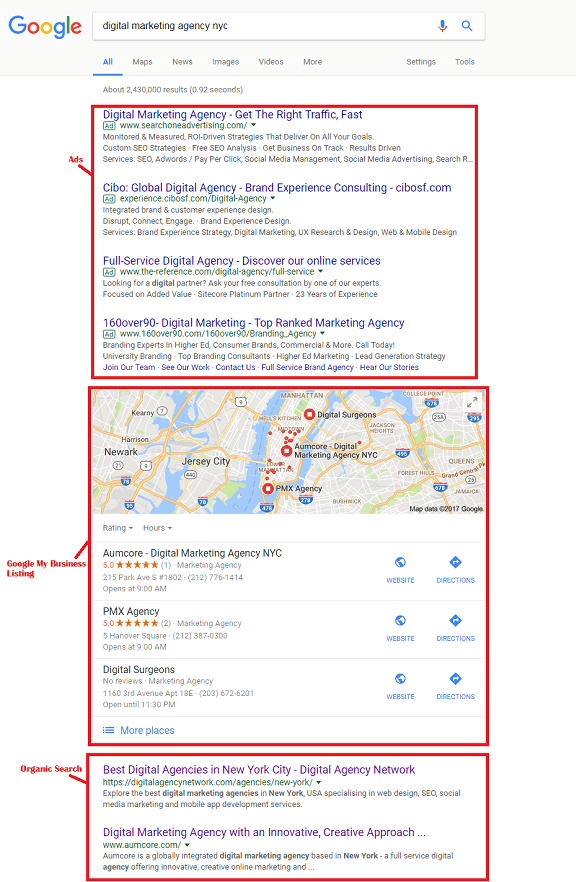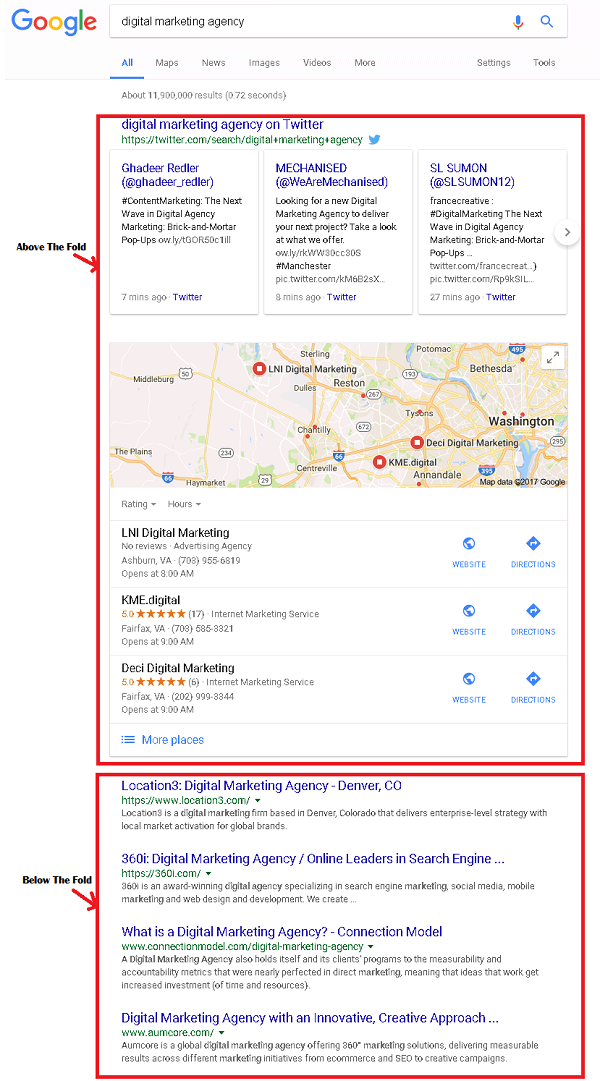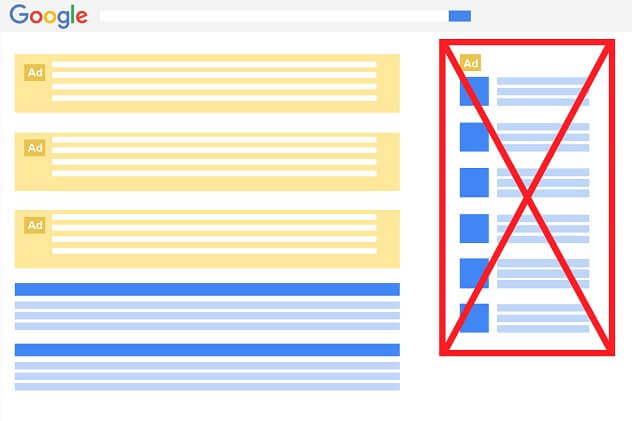Let’s see why:
Google SERP Layout: an Evolution
Google today looks different than it did year ago, even more different than it did 10 years ago, and drastically different than it did in its inception. All of these changes — the inclusion of images, videos, news, Knowledge Graphs and more — have impacted the display, sorting and order of SERPs. This, in turn, has a big impact on organic rankings.
Google Removes Right Side Ads
If you’re an advertiser, you probably noticed that Google removed ads from the right side of desktop search results. If you’re not an advertiser, you might be doing a Google search this very moment to see if I’m telling the truth. Well, am I? Of course I am, so let’s move on to where they are now: the top and bottom of the page. So instead of looking like this:

Ads on Google’s SERPs now look like this (you may also notice the additional 4th ad placement above the organic results and Google My Business listings):

Concerning the addition of the 4th ad placement, Google commented, “We’ve been testing this layout for a long time, so some people might see it on a very small number of commercial queries. We’ll continue to make tweaks, but this is designed for highly commercial queries where the layout is able to provide more relevant results for people searching and better performance for advertisers.”
A quick comment to fill in the gap, ‘highly commercial queries’ are those that have intent to purchase, and the fourth placement is reserved for these occasions. Moving on, there are two exceptions to the right side ad removal rule. First, Product Listing Ad (PLA) boxes that appear either above or to the right of search results, and second, ads in Knowledge Panel.
Therefore, we now have four paid search ads at the top of Google’s SERPs, three that fall below the 4th rank at the bottom, and organic results sandwiched in between. So what does all of this boil down to? In simple terms, it’s making desktop search look like mobile search. Okay, but why would we want that? Because Google (and everyone else) saw mobile traffic constantly rise over the years and the new layout creates a similar experience for desktop SERPs.
Will the Changes Impact My Organic Search CTR?
The question now becomes, will my organic CTR by position change? Will the percentage of traffic by Google results position change? To answer both questions in one word, yes. Because of the changes, your CTR is in danger of going down as paid ads take up organic real estate and organic results are pushed down.
It’s unfortunate, but this means that you now have even more work to get found. To counter this, you might want to consider developing a strategy that not only takes organic search into consideration, but paid as well. This (especially) rings true for local businesses because users are now seeing paid ads first.
Final Thoughts
These changes may seem like an annoyance you’d rather not deal with, but think about it from Google’s perspective. Their primary concern is for the end-user, not the advertiser trying to get his/her business found. Google is very good at deciphering intent and distinguishing between transactional and informational queries. The idea behind the change is that four paid ads that match a user’s query are better than the alternative because they’re providing more relevant results and better performance for advertisers.
This can be seen in their other moves aimed at improving UX for users. For example, a while ago Google teamed up with Twitter to bring their (Twitter) real-time content to their SERPs. With this partnership, you can now see relevant Tweets in search results. If you want to test this out, do a quick search for ‘#NBAFinals’ and see what pops up (spoiler: it’s the most relevant news and Tweets about Golden State’s win, sorry Cleveland fans). This is good for users, but as you can see in the image below, organic results get pushed all the way down:






Tell us your thoughts in the comments